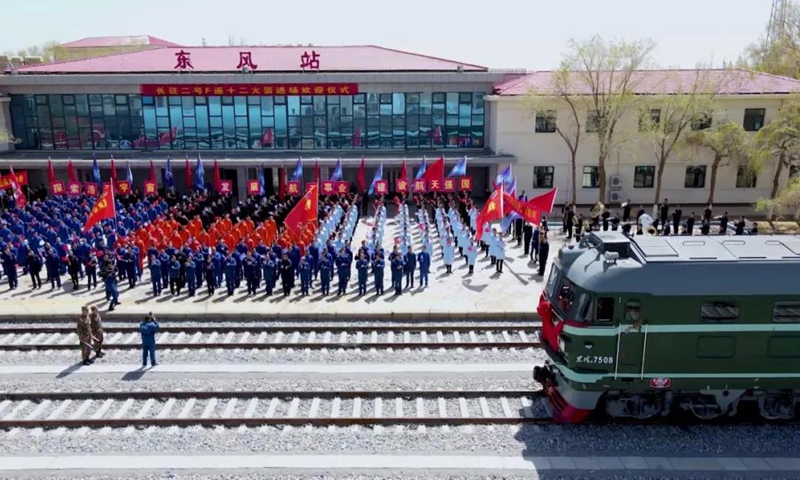
Photo:Sina Weibo
With launches of initial construction missions for China’s first-ever space station around the corner, the China Manned Space Engineering Office (CMSEO) announced Thursday that the Shenzhou-12 crewed spacecraft and its launch vehicle, the Long March-2F Y12 carrier rocket, have arrived at Jiuquan Satellite Launch Center.
The development signals that all the three carrier rockets, as well as the core cabinet module, cargo and manned spacecraft commissioned for the space station construction tasks are in position, and have gone into an exciting final preparation phase before their launches.
The crewed mission duo of Shenzhou-12 and Long March-2F Y12 are doing the final assembly and testing work, according to the CMSEO.
Facilities at the Jiuquan Space Launch Center in Northwest China's Gansu Province are in good condition, and all systems involved in the testing work are proceeding as planned.
The crew of astronauts tasked with the crewed mission is now receiving intense training for extravehicular activities, the CMSEO noted.
Some 12 astronauts will be sent to the space station during a two-year span, said Yang Liwei, who was the first Chinese person in space on the Shenzhou-5 mission in 2003 and is also a member of China’s top political advisory body, the National Committee of the Chinese People's Political Consultative Conference (CPPCC).
Four manned flights will be scheduled among a total of 11 launches in the next two years, the Global Times previously learned from China's National Space Administration.
The space station, which aims to be operational by around 2022, will be able to accommodate three astronauts under normal circumstances and up to six during crew replacement.
The CMSEO announced Monday that Tianzhou-2, the cargo spacecraft tasked with sending supplies to the space station, and its launch vehicle the Long March-7 Y3 carrier rocket arrived at the Wenchang Space Launch Center in South China's Hainan Province.
The Tianhe core cabinet module and the Long March-5B Y2 rocket have also arrived at the Wenchang launch site, the CMSEO said in February.
The first launch is expected to send the core cabinet into space, followed by the Tianzhou-2 cargo spaceship and Shenzhou-12 manned spaceship this year, the Global Times learned from the state-owned space giant China Aerospace Science and Technology Corporation (CASC) in January.
Zhou Jianping, chief designer of China's manned space program, said in December 2020 that the very first mission could be expected by spring 2021.
China’s ambitious space station program consists of three steps – surveying, constructing, and exploiting. The initial launches will carry out the first step, which is to complete docking and key in-orbit technological verification tasks.
The space station will be an extendable T-shaped form, with the core module at the center, cargo and crewed spaceships at each end, and two lab capsules on each side.
Global Times
